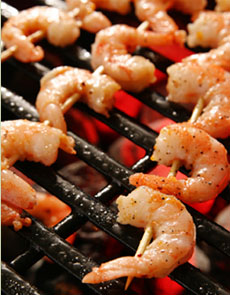TIP OF THE DAY: Avoid Grill Toxins With Organic Grilling
|
August 16th is National Bratwurst Day. Before you throw some brats on the grill, here are tips on organic grilling from Maria Rodale, CEO and Chairman of Rodale Inc., a publisher of health and wellness magazines, books, and digital content*.
Not surprisingly, she’s committed to organic living. This article is adapted from a larger article: AN ORGANIC GUIDE TO GRILLING Grilling in America needs an organic makeover—independence from exposure to conventional grilling toxins, says Maria. We need to apply that spirit of revolution to our health and the environment and take it organic every time we fire up the grill! Sure, you can find throw a grass-fed, certified-organic steak or an Applegate Farms organic hot dog on the grill. But there’s more to organic grilling than just what you cook. Organic grilling is a complete process that minimizes toxic chemicals from beginning to end, as it maximizes flavor and healthful benefits for you and the environment. |

Avoid toxic charcoal briquettes; use organic charcoal. Photo courtesy Hillshire Farms. |
|
|
Here Maria demystifies the grilling process and detoxifies it as much as possible. Her tips are safe and simple. You can use any grill; Maria uses a Big Green Egg charcoal grill with certified-organic charcoal. Big Green Egg sells organic charcoal, as do other companies. Whatever the brand, always use charcoal that’s made from natural materials like wood (look for “lump charcoal,” bamboo or coconut). You can use wood logs instead of charcoal; just make sure you have time to let them burn down a bit first. Avoiding toxic briquettes is the most important organic choice you can make for the environment and for your health. Make sure your grill is in a safe place, all your materials are handy, and the grill is clean enough. First, remove the grill grate. Put a few pieces of crumbled dry paper (or one piece of newspaper) at the bottom of the chimney; then load the charcoal on top. Spread a bit of charcoal around the sides, too. Light the paper on fire underneath. |
||
 Put some shrimp on the barbie… Photo courtesy The Smoked Olive (try their terrific smoked olive oil!). |
STEP 4: WAIT It will take 10 to 15 minutes for the charcoal to get hot enough. You’ll know it’s ready when you can see red coals glowing through the chimney holes. Put the grill grate back on the grill. It will need a few minutes to warm up, so don’t rush. Spread some oil on the grill to prevent sticking and add the food. |
|
|
|
||


